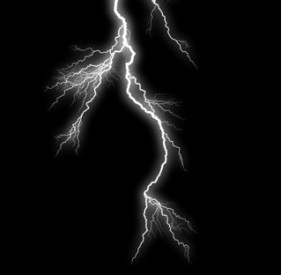| NSA Data Bank Hit by Mystery Power Surges
By F. Michael Maloof
For WND

WASHINGTON – The new $1.4 billion National Security Agency supercomputer facility in Utah has been wracked with unexplainable, repeated electrical surges and explosions that have destroyed hundreds of thousands of dollars worth of sensitive computers used to store the vast amounts of data it scoops up on foreign nationals and Americans.
In the past 13 months, there have been some 10 electrical meltdowns at the new 200-acre facility in Bluffdale, Utah, which has been unable to run all of its computers and servers.
The cooling operations apparently fail, resulting in the meltdowns.
But the failures for such a project are not ordinary. They have been described as “a flash of lightning inside a two-foot box,” one source said.
The failures have been described as fiery explosions, melted metal and broken circuits. While efforts are under way to fix the problems, there is no assurance at this point that the fixes will be sufficient, experts believe.
But the experts warn that the meltdowns and loss of data could be replicated many times over across the U.S. should the nation be hit by an electromagnetic pulse, or EMP, blast.
Maine state Rep. Andrea Boland said data centers and other critical components providing services to businesses and homes would be targets.
She introduced legislation in the Maine legislature that eventually was passed and signed into law for the state to begin protecting its electrical grid system from an EMP event.
“What ‘destroyed hundreds of thousands of dollars’ worth of machinery and delayed the center’s opening for a year’ is what would be delivered to us by a severe solar storm (100 percent probability) or man-made electromagnetic pulse (EMP), because, as in Utah, NERC and utility owners have ‘bypassed regular quality controls in design and construction,’ and left us the most vulnerable country in the world,” Boland said.
“They know it, enemies know it, Congress knows it,” she said. “Maine is doing something about it.”
Boland’s reference to the NERC is the North American Electric Reliability Corporation. It oversees bulk power systems throughout the U.S.
However, NERC has opposed measures to harden the electrical grid and local utilities, prompting states such as Maine to begin to take action on their own. The federal government has been unresponsive to taking the initiative to harden facilities nationwide.
The opening of the new NSA data storage center has been delayed for another year while experts attempt to find the source of the power flashes.
The contractor that designed the data center’s system is the Pennsylvania-based Klingstubbins. While the firm claims to have “uncovered the issue” and are now “implementing a permanent fix,” the U.S. Army Corps of Engineers, which is overseeing the construction of the data center, said not so fast.
The Army Corps said that the meltdowns are “not sufficiently understood.”
An ACE report said that there is insufficient information on the design of the electrical system that could create new issues in changing circuit breaker settings. The report added that normal quality controls in design and construction had been bypassed to “fast track” construction.
The Utah data center is just one of a number of new NSA data centers being created across the nation to collect data under NSA’s massive surveillance program. The program was exposed earlier this year by former NSA contractor Edward Snowden, who has sought asylum in Russia.
The project requires a 65-megawatt center with a chiller plant, fire suppression systems, electrical generators and an uninterruptible power supply backup capacity.
Sixty-five megawatts of energy is enough to power a city of more than 20,000 people. Once in operation, it will be able to store exabytes or even zettabytes of data. A zettabyte is 100 million times larger than all the printed material in the Library of Congress.
Norbert Suter, ACE’s chief of construction operations, said that “final commissioning of the entire electrical system is still ongoing.”
“The corps is ensuring it functions as required and that it will be completely reliable prior to releasing the project to the customer,” in this case, NSA, he said.
Yet, Suter couldn’t say when the site would be turned over to NSA.
“During the testing and commissioning of the Utah data center, problems were discovered with certain parts of the electrical system,” Suter said. “Issues such as these can arise in any project, and are the reason the corps tests and reviews every aspect of any project prior to releasing it to the customer.”
Suter said that the cause of the electrical problems had been identified and that a team is currently working on it.
The team also had determined that there were ventilation problems. Such massive data centers require air management systems capable of cooling sensitive equipment to remove heat that is generated from their operation.
“An airflow issue was discovered with the generators and the contractor is correcting the problem,” Suter said.
However, he was unsure as to when the problems will be corrected.
The WND article is viewable online at: http://www.wnd.com/2013/10/nsa-data-bank-hit-by-mystery-power-surges/
|



